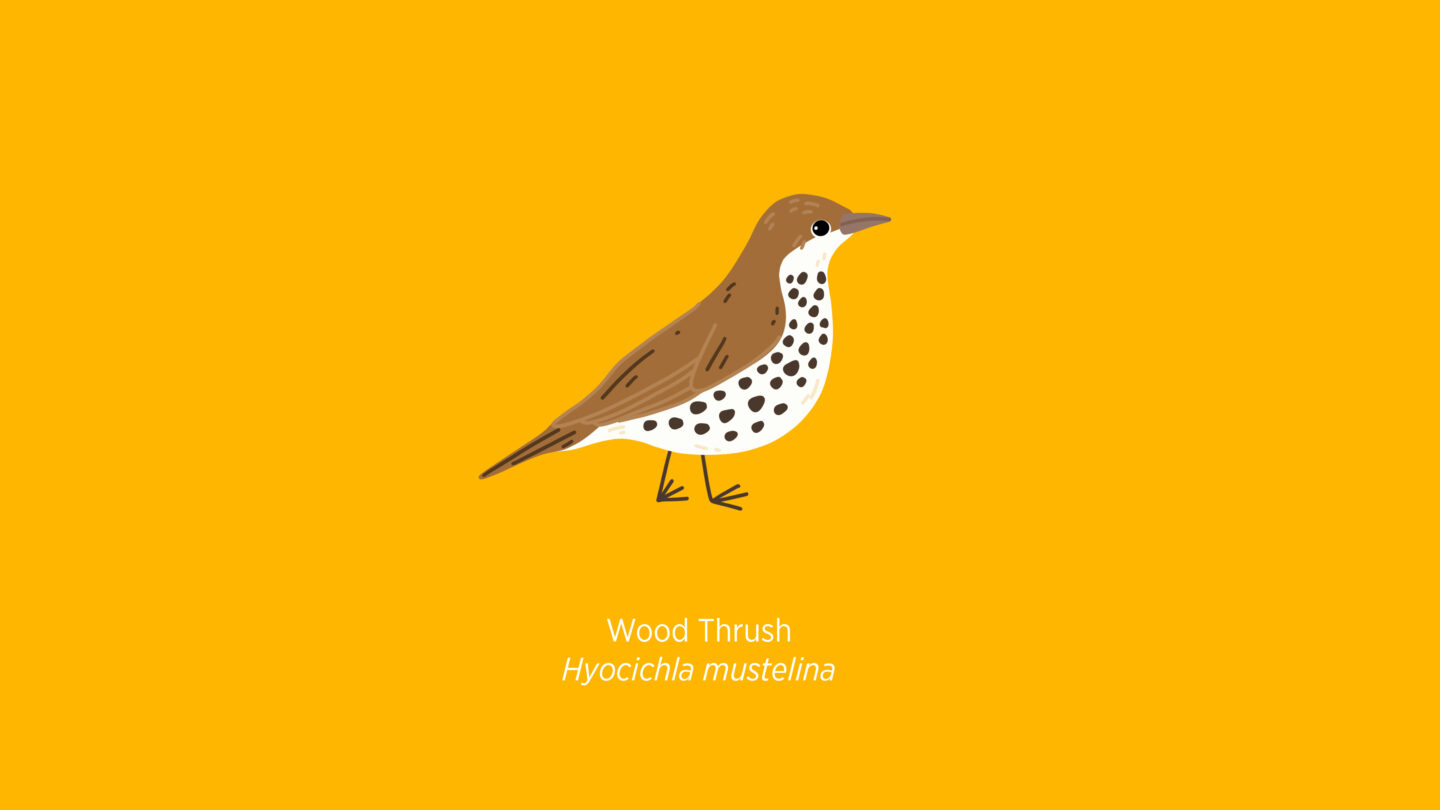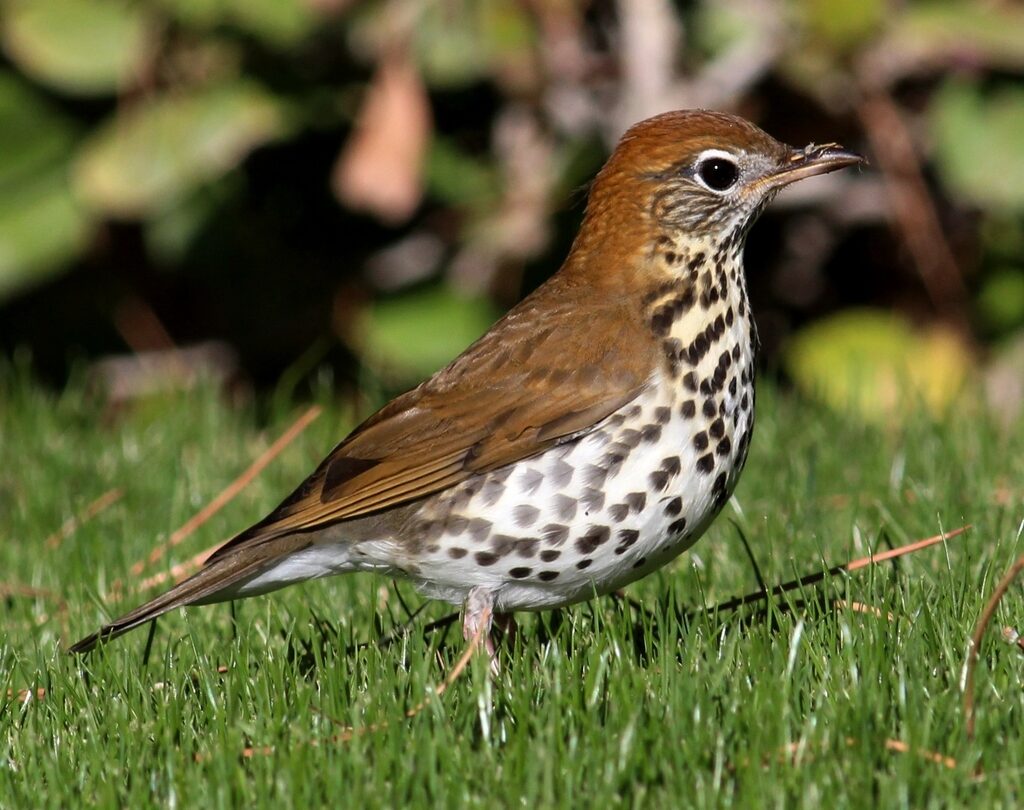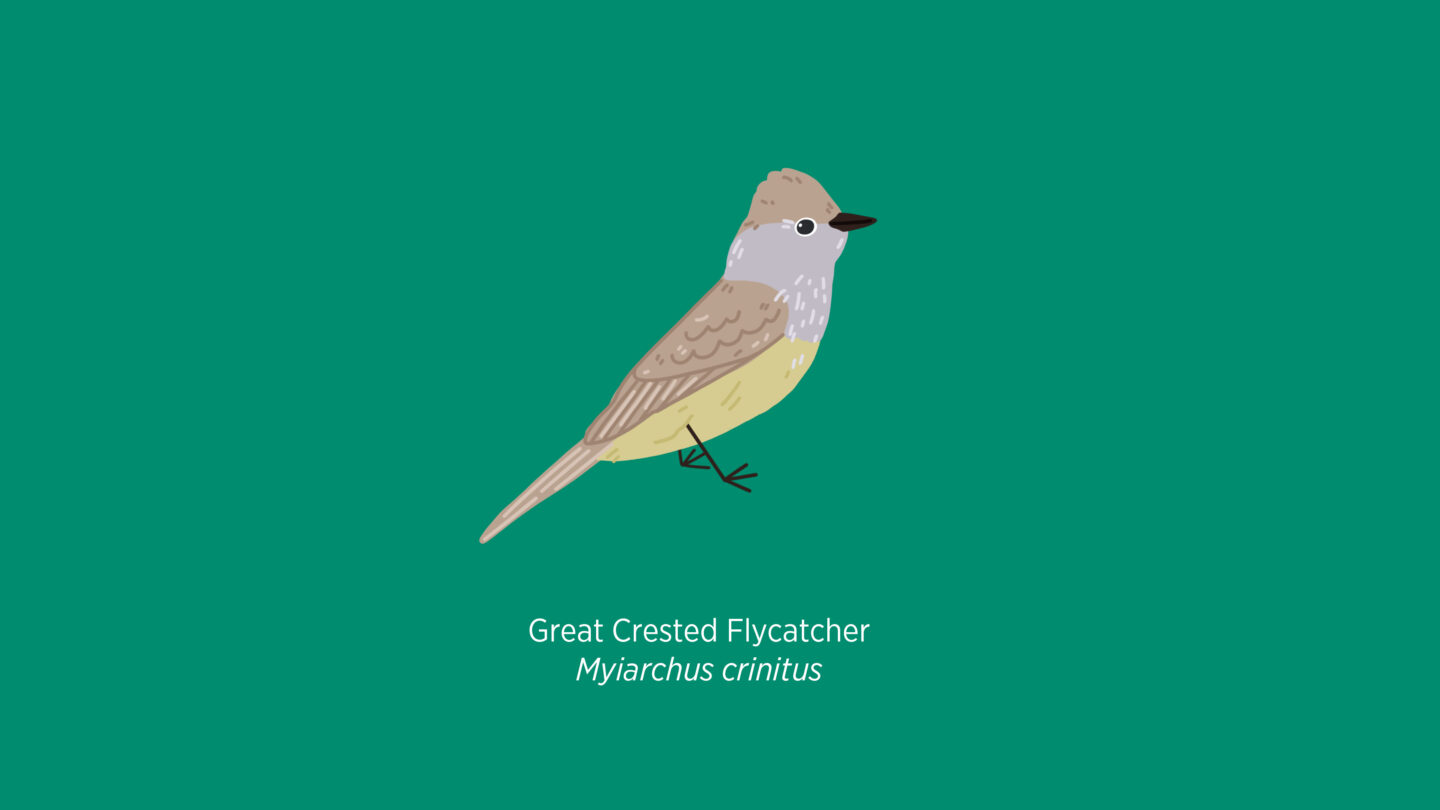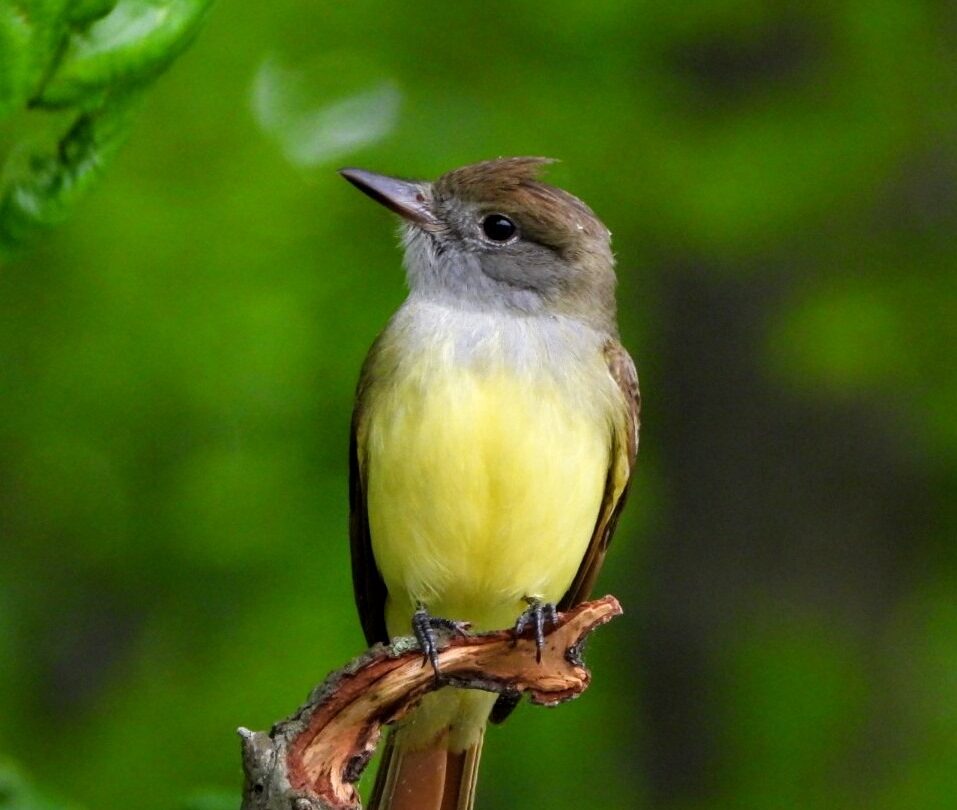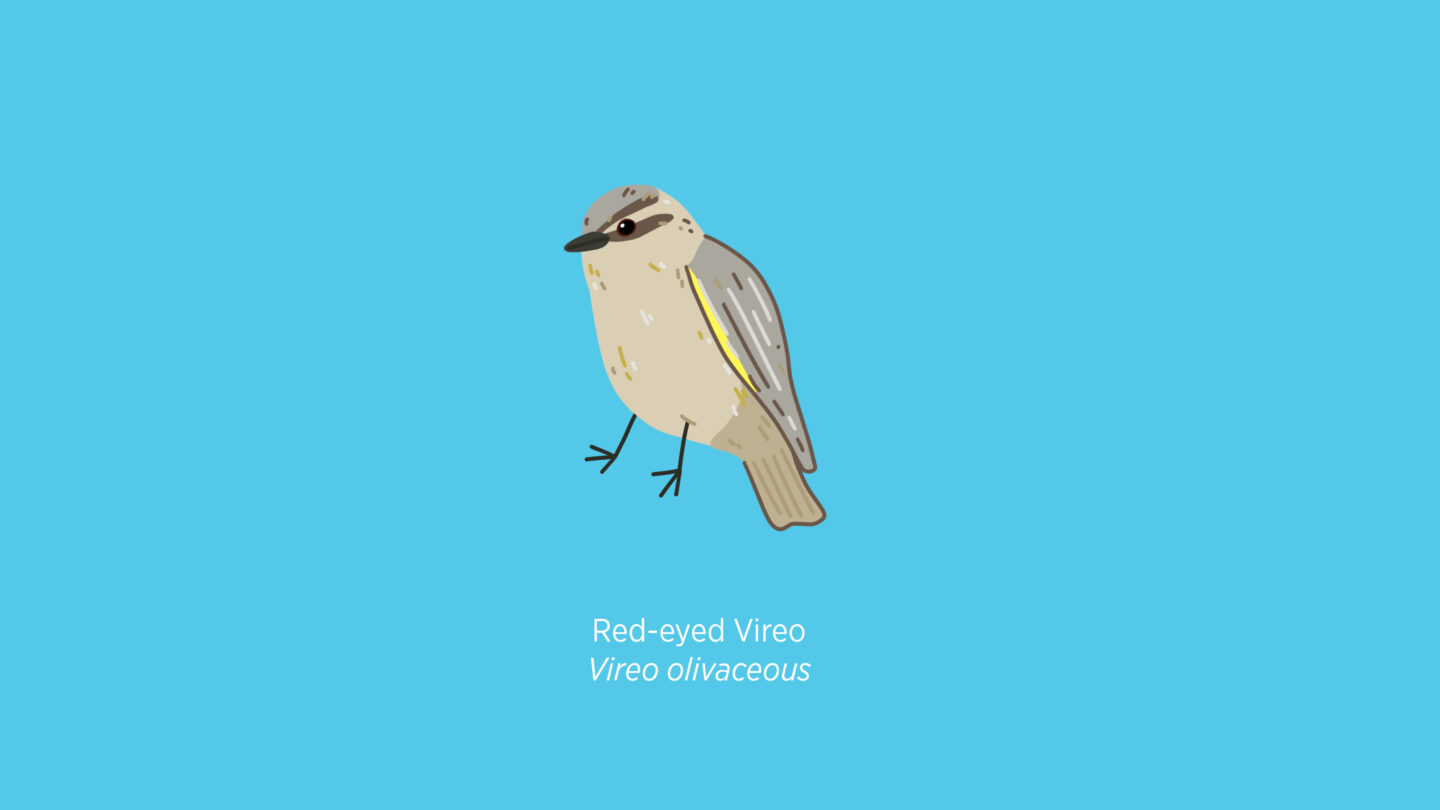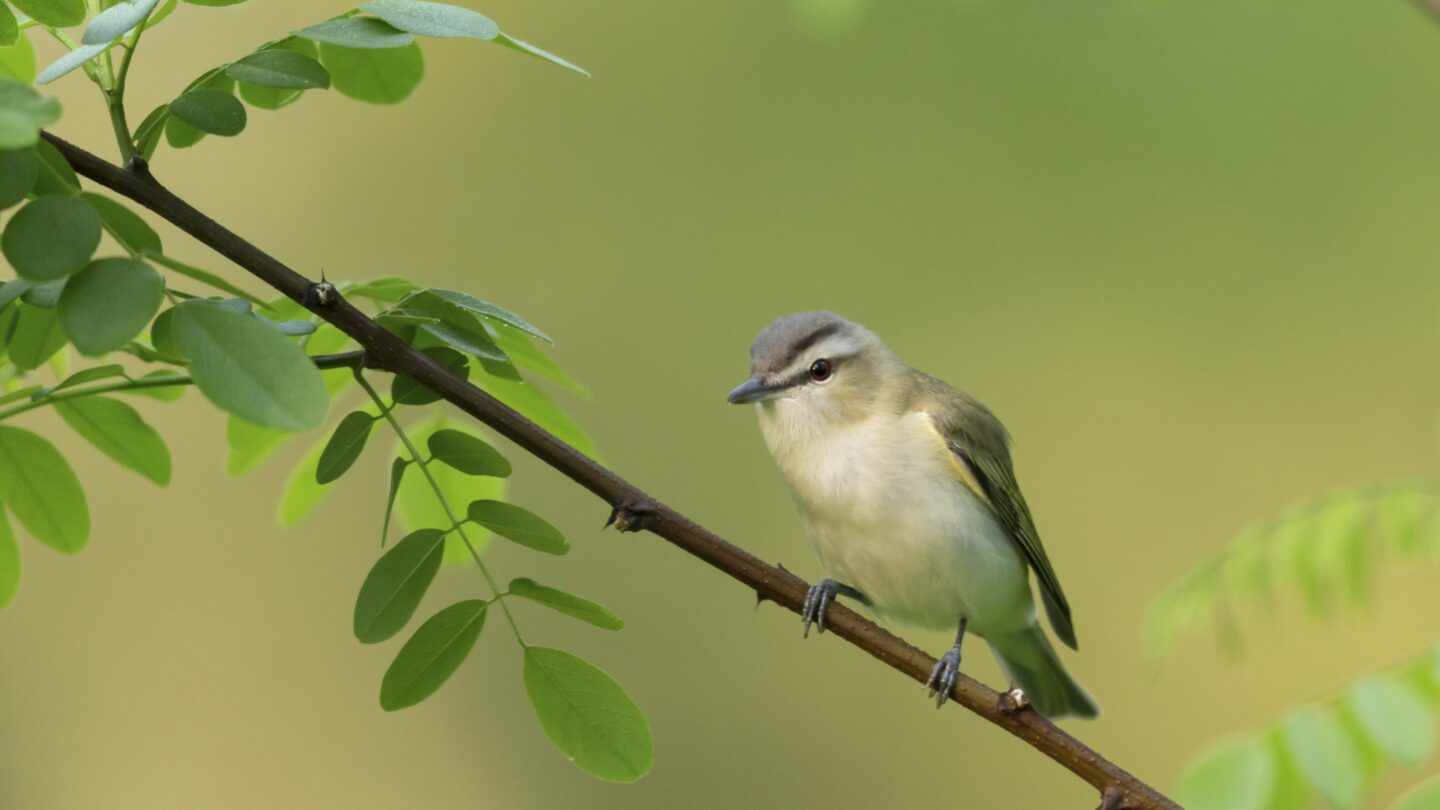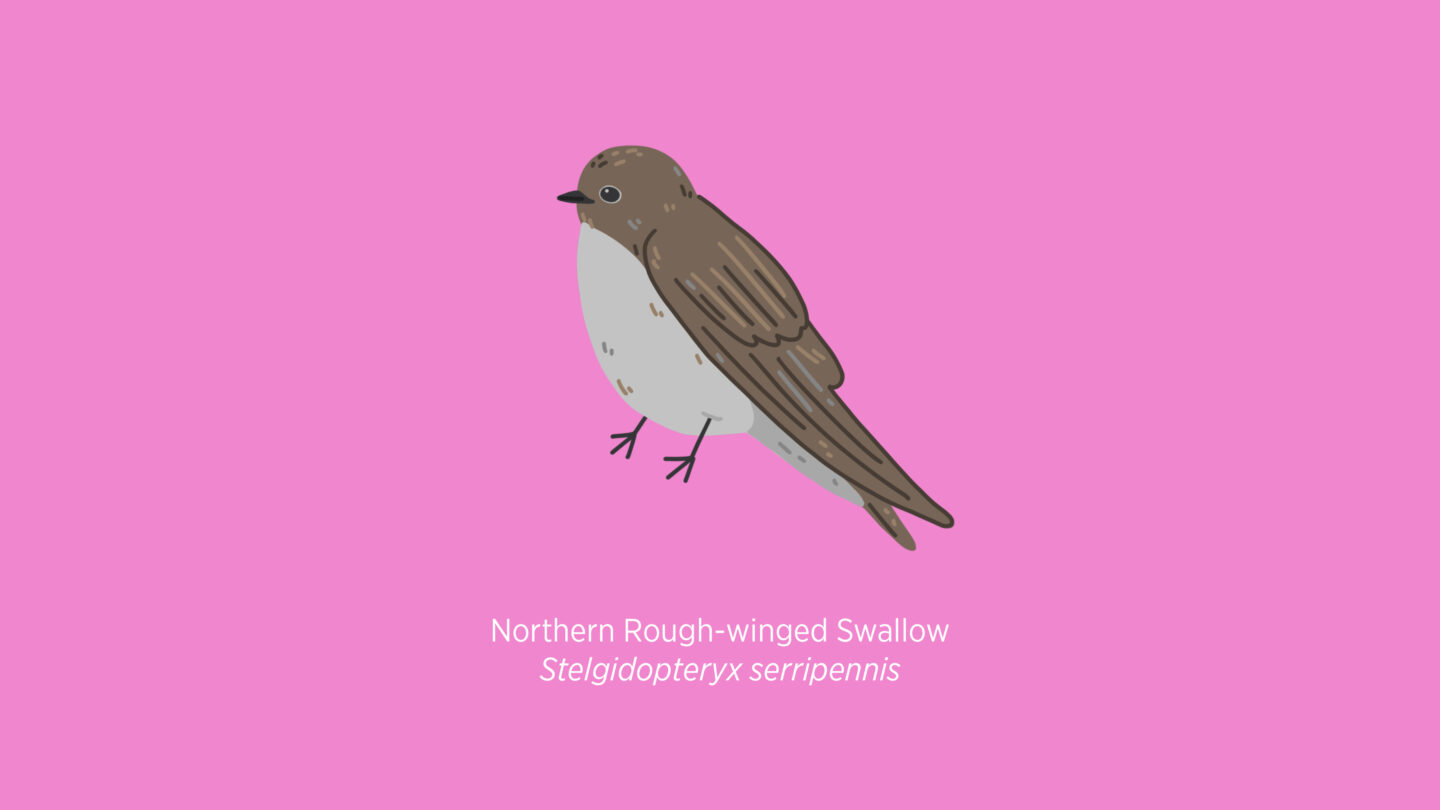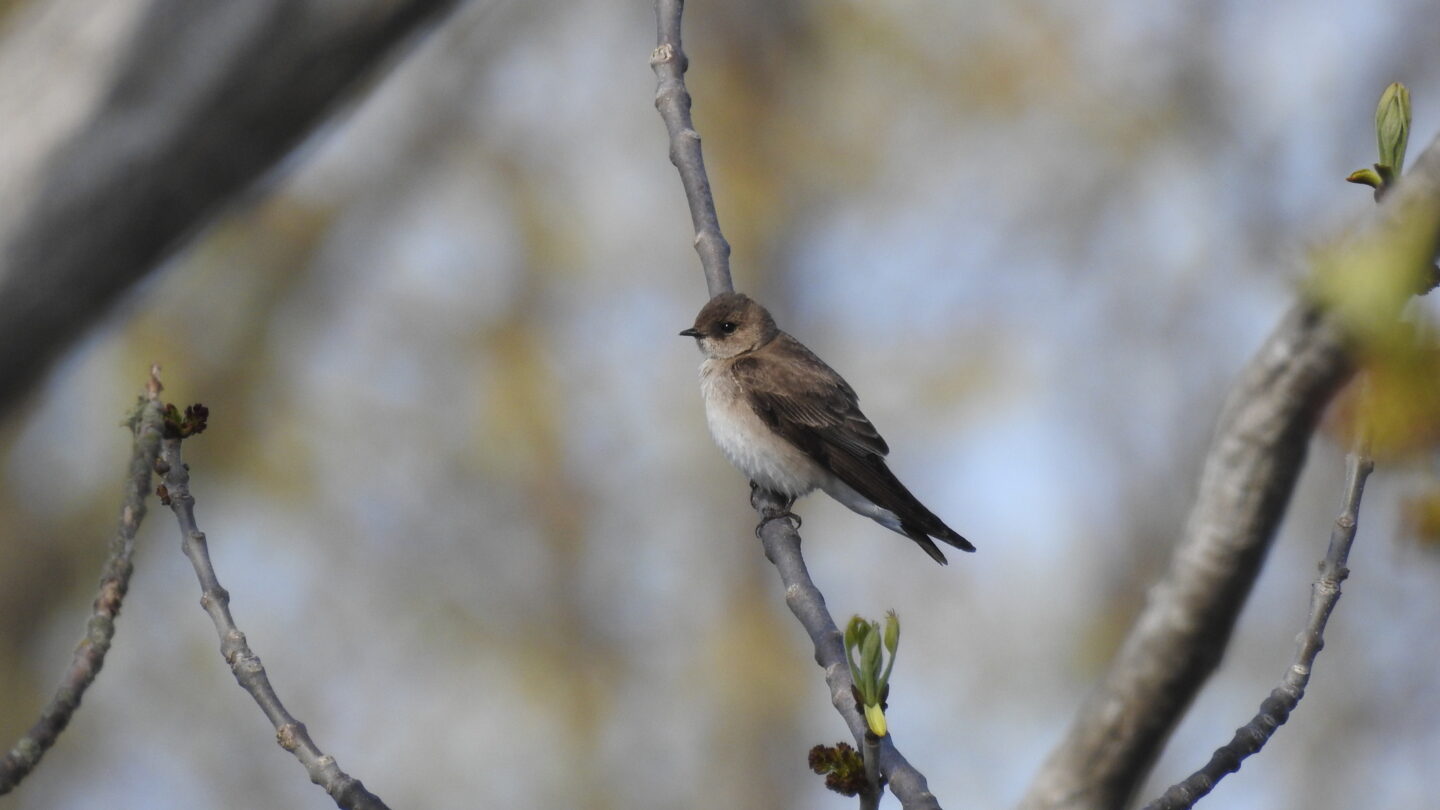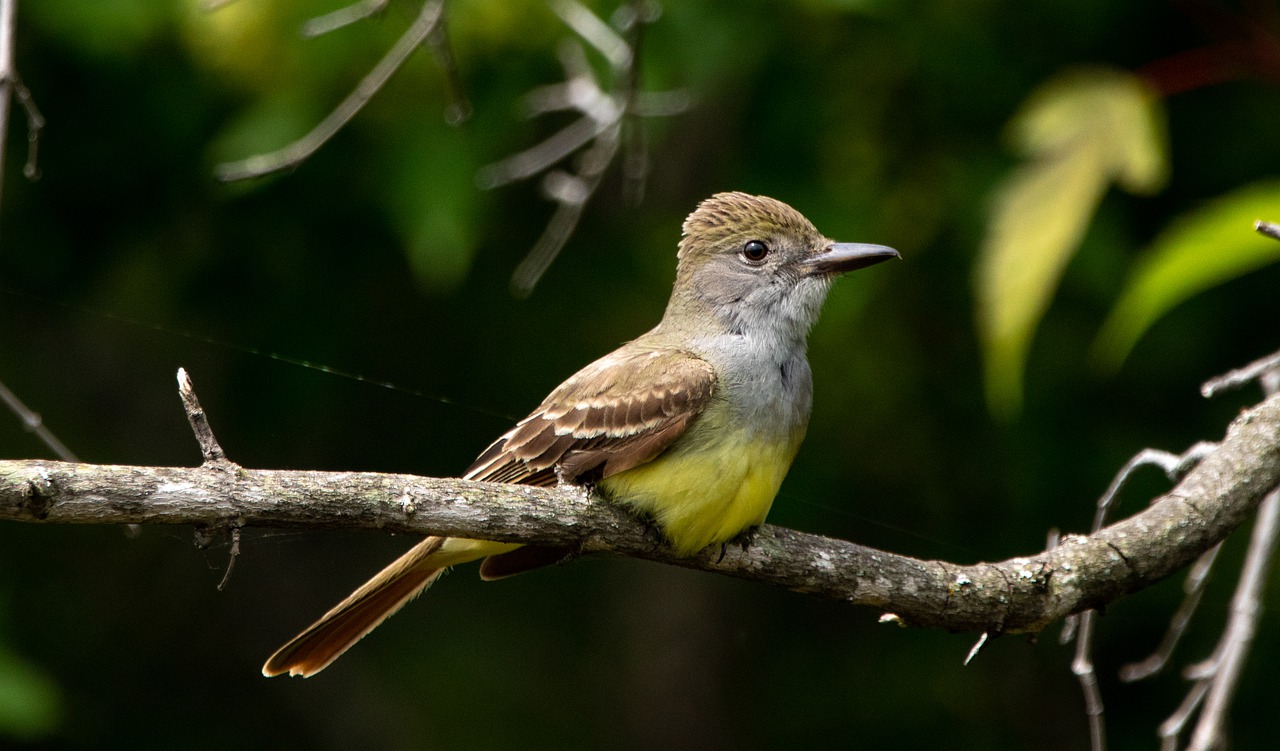
Springtime is one of the finest seasons for Goizueta Gardens at Atlanta History Center. The warmer temperatures and longer days usher in a new year’s growth for the plants, and flowers follow close behind the first flush of leaves. The bright fresh green of the new tree leaves heralds another season’s worth of sunlight transformed into trunk and branch and root. And along with the year’s new growth of foliage, neotropical migrant birds begin their journey through Georgia. Several simply pass through, stopping to refuel and rest briefly after their long flights from Central and South America before continuing to breeding grounds further north. But for many, Georgia—and by extension Goizueta Gardens—is their destination.
These birds are spring and summer residents and will nest and produce young here before returning south in the fall.
Along with the new growth of plants and the return of migrant birds, another sort of rebirth takes place. Insects, after overwintering or moving north from warmer southern climes, reappear along with the warmth of the spring sun and begin to feast on the newly lush plant life around them. Chief among them are caterpillars. Although their existence is often hidden, the trees and plants around us are full of caterpillars, eating away at leaves to fuel their explosive growth into butterflies and moths. This explosion of insect life is vital to the returning summer resident birds, who rely almost entirely on caterpillars to feed their chicks. The diverse botanical landscapes and healthy forests of Goizueta Gardens are perfect for producing insects and caterpillars, and hence are perfect for summer birds. The following are just a few of the birds that are found here in spring and summertime; take a moment in the gardens and you may hear or see them yourself.
Wood Thrush
Hyocichla mustelina
The Wood Thrush is a nondescript brown bird with an off-white chest and belly streaked with dark brown dots. This species has one of the most beautiful and distinctive calls of any North American bird, a clear, flute-like ee-oh-lay song that can often be heard early on spring mornings in Swan Woods. Wood Thrushes prefer older forests with tall trees, a healthy understory of smaller trees and shrubs, and a clear forest floor for nesting. They feed their chicks caterpillars and other soft invertebrates and forage for insects, snails, and small fruits of various types to feed themselves. They build their nests in a small tree or shrub, usually laying 3 or 4 eggs per breeding cycle. Although all the wooded areas within Goizueta Gardens are hospitable to Wood Thrushes, Swan Woods provides the most ideal composition of tall trees and well-developed forest understory, and most likely plays host to several Wood Thrush mating pairs each year.
Great Crested Flycatcher
Myiarchus crinitus
The Great Crested Flycatcher is one of the larger songbirds in Georgia, sporting a yellow belly and red brown tail feathers. Despite its size, the Great Crested Flycatcher is difficult to see because it prefers to remain at the tops of large trees where it flies out to catch insects—hence its name. Though hard to spot, this species utters a very loud wheep call that echoes frequently though Georgia woodlands in the spring and summer. They prefer a mix of older woods with tall trees, forest edge areas, and grassy open areas. These flycatchers are obligate secondary cavity nesters, which means that they need to use cavities excavated in trees by other birds or animals, such as woodpeckers or squirrels. With plenty of mature trees, woodpeckers, and a mix of open areas and forest edge, Goizueta Gardens provides a welcome site for Great Crested Flycatchers to nest. The nesting habits of this bird also highlights the need for standing dead trees and trees in the process of dying; where it is safe to do so, the gardens staff at Goizueta Gardens leaves dead and dying trees standing to provide habitat for the myriad wildlife, including flycatchers, that use these senescent trees.
Red-eyed Vireo
Vireo olivaceous
Red-eyed Vireos are one of the most common summer resident birds but are rarely seen due to their propensity to stay in the tops of tall trees. Their 3-note calls can be heard across Georgia in almost every hardwood forest in the state. These songbirds can be heard throughout the spring and summer in Goizueta Gardens, especially around Smith Farm, Quarry Garden, and Swan Woods. These areas have tall hardwood forests that are preferred by this species. Red-eyed Vireos are voracious consumers of caterpillars, which they rely on to feed their chicks, and which also make up 50% of the diet of adult birds. They build their nests in understory trees, usually 10 to 15 feet above the ground, cementing the nest to a branch fork with spider webs and sticky plant fibers. Take a walk through Goizueta Gardens during the summer and you are guaranteed to hear a Red-eyed Vireo calling.
Northern Rough-winged Swallow
Stelgidopteryx serripennis
It is a sign that spring has arrived at Atlanta History Center when the Northern Rough-winged Swallows return. These birds are master flyers, cutting through the air in pursuit of insects on the wing—their only food source. Northern Rough-winged Swallows can be seen nearly every day in the spring and summer in Goizueta Gardens, especially in the open areas above the Entrance Gardens and around the museum building, as well as above Smith Farm. They like to nest in burrows in eroding banks, although they are also known to build nests in crevices of cliff faces and quarry walls, as well as under bridges and on buildings. Although Northern Rough-winged Swallows probably do not nest in Goizueta Gardens, it is possible that they could use the rough edges of the museum building. The diverse plantings in the Entrance Gardens and at Smith Farm are perfect habitats for the flying insects these birds eat, and these areas provide a wonderful place to see Northern Rough-winged Swallows in flight throughout the spring and summer.



